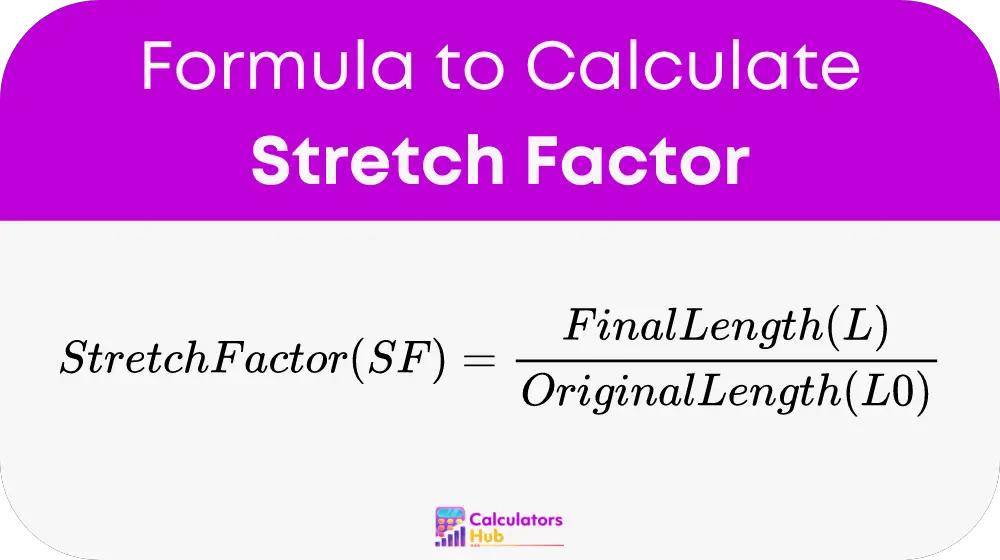The Stretch Factor Calculator helps you determine the extent to which an object has been stretched. This tool is especially useful in fields like textile manufacturing, metalworking, and construction, where precise measurements are essential. By inputting the original length of the object and its final length after stretching, the calculator provides a numerical value indicating the degree of stretch.
Formula of Stretch Factor Calculator
The formula for calculating the stretch factor is straightforward:

Here's what each variable represents:
- SF: The stretch factor, a numerical value indicating how much the length has increased.
- L: The final length of the object after stretching, measured in the same unit as the original length.
- L0: The original length of the object before stretching, measured in the same unit as the final length.
Commonly Searched Terms and Conversion Table
To make it easier for users, here's a table with some general terms and conversions that are often searched for when using the Stretch Factor Calculator:
| Original Length (L0) | Final Length (L) | Stretch Factor (SF) |
|---|---|---|
| 10 cm | 15 cm | 1.5 |
| 20 cm | 30 cm | 1.5 |
| 50 cm | 75 cm | 1.5 |
| 1 m | 1.5 m | 1.5 |
Example of Stretch Factor Calculator
Let's go through an example to see how the Stretch Factor Calculator works in practice:
Example:
- Original Length (L0): 20 cm
- Final Length (L): 30 cm
Using the formula:
Stretch Factor (SF) = Final Length (L) / Original Length (L0) SF = 30 cm / 20 cm SF = 1.5
In this example, the stretch factor is 1.5, indicating that the object has increased in length by 50%.
Most Common FAQs
A1: The Stretch Factor Calculator is highly accurate, provided that the measurements for the original and final lengths are precise. It's essential to use the same unit of measurement for both lengths to ensure accuracy.
A2: Yes, the Stretch Factor Calculator can be use for various materials, including textiles, metals, and plastics. The key is to accurately measure the original and final lengths of the material.
A3: The stretch factor is crucial in manufacturing because it helps ensure that materials are use efficiently and meet the required specifications. It aids in quality control and helps in making adjustments to the manufacturing process if necessary.